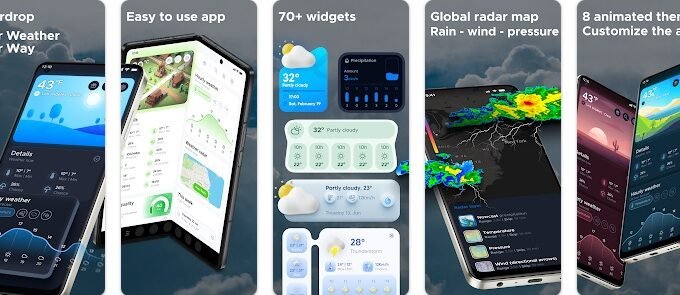
6 Crucial Tips To Choose The Right Prototyping Tool For Your Website
According to a renowned author and illustrator Frank Chimero: “People ignore design that ignores people.” This statement is true in today’s internet-savvy world where customers are addicted to access impressive and influential websites in order to fulfill their different needs.
But to design, an extraordinary website isn’t a piece of cake. In order to build a superb website, it is mandatory for you to take help of website prototyping so that to examine the core functionality that you want in your final version of the digital product.
There are numerous website prototyping tools available in the market, which makes the task of choosing the best daunting for every entrepreneur. Picking the right tool is essential for you to transform your raw app ideas into fully functional interactive mock-ups.
In order to make the task of taking decision easier for you, let’s take a look at the six crucial tips that can help you in choosing the most appropriate website prototyping tool for your next web app development project.
- Learning Curve Of The Tool
First of all, it’s essential for you to evaluate how easily you can adopt the tool. That means the learning curve of the tool. Figure out the time span which designers require in order to get hold of a particular tool. For instance, Fluid UI is a prototyping tool that is believed to have the shortest learning curve. On the other hand, Axure RP is one whose learning curve is steep and complex.
All the web prototyping tools are different from each other having individual features and functions. Therefore, you have to provide the designers with a sufficient time so that they can master one of these tools and help you in building a perfect prototype for your upcoming website.
- The Capacity To Sharing The Prototypes
You have to understand that collaboration is at the core of the web design which makes it significant for all the designers and other people associated with the web development project to be in sync with each other.
Examine the collaboration capability of the prototyping tool and check whether it allows all the designers, developers, and product owners to be on the same page. The tool should facilitate seamless sharing of designs so that the concerned person can give their instant feedback and observe the modifications in the digital product.
In Vision is the prototyping tool that has project collaboration as its greatest strength. It provides the designers with the freedom to design, review, test, and share the results with other developers and team members. Also, the product owners can easily give their valuable feedback and study amendments in the digital product.
- Compatibility With Your Regular Tools & Apps
While choosing a prototyping tool for your website, it becomes essential for you to evaluate how well it fits into your design process. Also, you need to take into account whether it has the potential to integrate easily with the other tools you use on a regular basis.
Let’s understand it with the help of an example. If you are using Sketch, Photoshop, or Illustrator for designing then you should choose the prototyping tool that is capable to use the files produced by these apps. It should not be an ideal scenario if you have to export assets separately and create everything from scratch in order to generate the interactions.
- Comfort & Ease Of Use
It should be easy for the designers to use the prototyping tool that you are going to select for your website. It helps the designers to save a lot of their time and enhance the output. Also, the designers must feel comfortable with the tool you choose so that they can develop wire frames and mock-ups in a hassle-free manner.
In addition, your prototyping tool should decrease the number of actions a designer needs to take in order to complete a particular task. Also, it should be simple and provide them with all the tools and resources designers need for building interactive prototypes.
For example, Marvel is a prototyping tool that non-designers can also use efficiently. This browser-based tool simplifies the entire design process to a great extent. Also, its user interface is extremely intuitive and straightforward.
- Cost Of The Tool
There are many prototyping tools available in the market, but these all do not fit into everyone’s budget. Therefore, it becomes essential for you to choose the most appropriate one by considering the amount you can spend on subscribing or purchasing it.
You should not get blinded by the niche features that these tools have but make a clever choice to pick the right one that proves out to be pocket-friendly for you at the same time it should fulfill all your specific requirements of the web development project.
- Fidelity Of The Prototypes
When choosing a prototyping tool, it’s also essential for you to consider the specific requirements of the prototype you actually need. For example, it can be possible that you only want a simple mock-up of the website layout. Or in some cases, you might need something that is capable to support more complex and detailed interactions.
The requirements of the projects differ from one to another on the basis of the specifications provided by every client or product owner. All prototypes can be classified into low, medium, and high fidelity categories.
Here, low fidelity means that there is only the need for testing the idea. Whereas, in medium fidelity, the core focus is on layout, information and interaction design. And ultimately, high fidelity gives importance to factors such as detailed micro-interactions, visual design, and animation. For instance, Proto.io is an ideal prototyping tool for building high fidelity, interactive prototypes for mobile apps and websites.
Earlier was the time when mock-ups were designed on paper and shown to the clients or other stakeholders directly. But with the help of these advanced prototyping tools, you can do much more. These tools streamline the overall designing process and make it less hectic for both the designers as well as the product owners.





